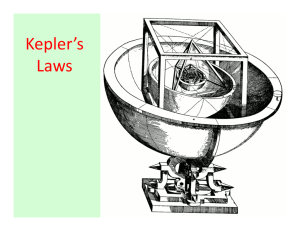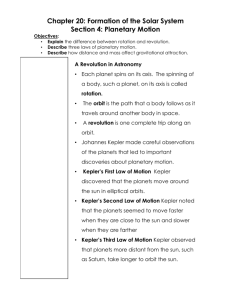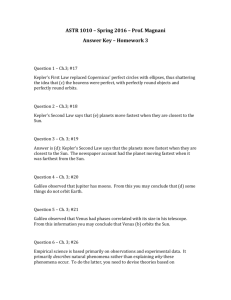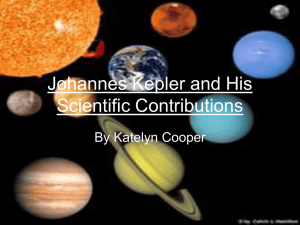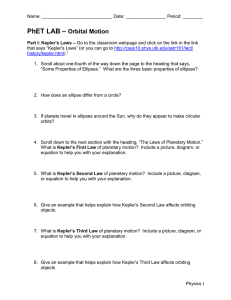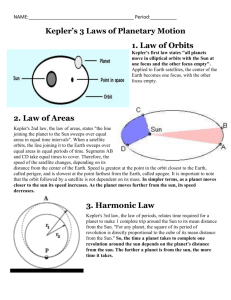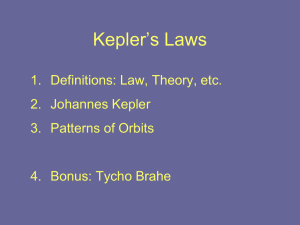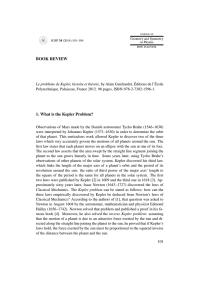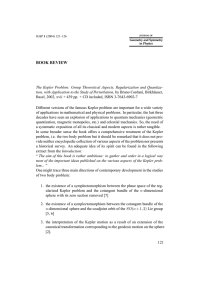physics.classnotes.Feb4.2014
advertisement
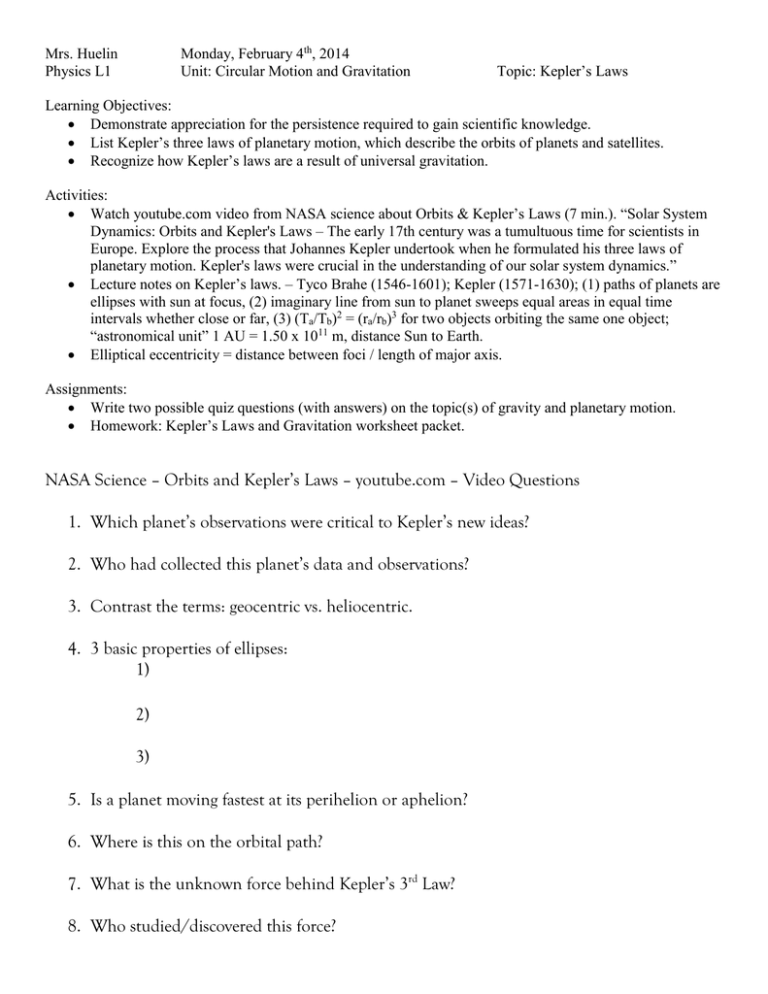
Monday, February 4th, 2014 Unit: Circular Motion and Gravitation Mrs. Huelin Physics L1 Topic: Kepler’s Laws Learning Objectives: Demonstrate appreciation for the persistence required to gain scientific knowledge. List Kepler’s three laws of planetary motion, which describe the orbits of planets and satellites. Recognize how Kepler’s laws are a result of universal gravitation. Activities: Watch youtube.com video from NASA science about Orbits & Kepler’s Laws (7 min.). “Solar System Dynamics: Orbits and Kepler's Laws – The early 17th century was a tumultuous time for scientists in Europe. Explore the process that Johannes Kepler undertook when he formulated his three laws of planetary motion. Kepler's laws were crucial in the understanding of our solar system dynamics.” Lecture notes on Kepler’s laws. – Tyco Brahe (1546-1601); Kepler (1571-1630); (1) paths of planets are ellipses with sun at focus, (2) imaginary line from sun to planet sweeps equal areas in equal time intervals whether close or far, (3) (Ta/Tb)2 = (ra/rb)3 for two objects orbiting the same one object; “astronomical unit” 1 AU = 1.50 x 1011 m, distance Sun to Earth. Elliptical eccentricity = distance between foci / length of major axis. Assignments: Write two possible quiz questions (with answers) on the topic(s) of gravity and planetary motion. Homework: Kepler’s Laws and Gravitation worksheet packet. NASA Science – Orbits and Kepler’s Laws – youtube.com – Video Questions 1. Which planet’s observations were critical to Kepler’s new ideas? 2. Who had collected this planet’s data and observations? 3. Contrast the terms: geocentric vs. heliocentric. 4. 3 basic properties of ellipses: 1) 2) 3) 5. Is a planet moving fastest at its perihelion or aphelion? 6. Where is this on the orbital path? 7. What is the unknown force behind Kepler’s 3rd Law? 8. Who studied/discovered this force?
